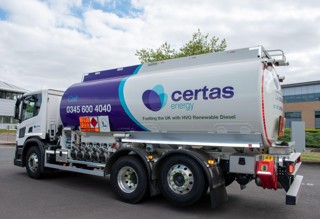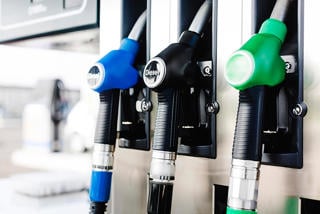Her Majesty’s Revenue and Customs (HMRC) has introduced significant changes to Advisory Fuel Rates (AFRs) in the wake of rising fuel prices and mounting pressure from ACFO.
It’s an important victory for the association, which had been pressing HMRC for the rates to be more robust for the past five years.
However, while the industry has welcomed the changes, the new system has received criticism from some quarters.
ACFO director Stewart Whyte said: “We are delighted that HMRC has accepted our arguments over Advisory Fuel Rates.
“Our major concern recently has focused on the volatility of fuel prices, which we have witnessed not only in recent months, but several times since we started discussing the Advisory Fuel Rates mechanism with officials.”
Fleets have had to endure record prices at the pumps with the average price for a litre of diesel now 143.2p compared to 120.9p in June 2010.
AFRs apply where employers reimburse employees for business travel in their company cars, or require employees to repay the cost of fuel used for private travel.
Historically the rates have been reviewed twice a year, but HMRC will now review them on a quarterly basis and has withdrawn its commitment to make interim changes if fuel prices vary by 5% or more.
It has also relaxed the margin built into the average fuel consumption projection from within 10% to within 15% to better reflect real-world driving conditions.
In addition, it has introduced an additional rate band for diesel and HMRC has also told ACFO that it will continue to review diesel engine bands.
“The new rates now make sense and are fair for all,” said Leigh Stiff, fleet manager at Hannaford.
“Splitting the diesel into three bands was long overdue and has moved in line with manufacturer developments.”
IBM’s fleet manager Phil Redman added: “This is the optimum result for all interested parties.”
However, there are some anomalies in the new rates with drivers of the Lexus CT200h, a luxury hybrid hatchback, receiving 18ppm despite fuel costs from KeeResources, published on www.fleetnews.co.uk, revealing an actual rate of 8.78ppm.
In addition, the new split for diesel which has introduced a separate band for cars up to and including 1,600cc will see company car drivers who were receiving 13ppm now able to claim only 12ppm.
“I welcome the fact that the new rates now better reflect real-world driving conditions,” said Debbie Floyde, group fleet and risk manager at Bauer Media.
“But I’m disappointed that in introducing the new diesel band they’ve dropped the pence per mile rate.
“Approximately one-third of our fleet falls into that bracket and it’s hard to explain to drivers why they’re losing out when every other bracket is increasing.
“It also seems to suggest that they’re better off choosing a bigger-engined vehicle when we should be encouraging drivers to downsize.”
Gareth Roberts, fleet manager for the Countryside Council for Wales, also believes that the revised rates do not entice staff to select the most fuel-efficient vehicles.
“Higher mileage rates should be applied to the cleanest and most efficient vehicles which will increase the selection from staff to opt for the most efficient vehicles and play a vital part in reducing the business carbon footprint,” he said.
An HMRC spokesman said: “When AFRs were introduced, there were not enough small capacity diesel engines on the market to justify a separate band for them.
“HMRC received representations from key external stakeholders that the greater efficiency of smaller-engined diesels was having a distortive effect on the AFRs figure for the band up to 2,000cc. HMRC decided that there was sufficient evidence to introduce a new band for smaller diesel engines.”
It added that the new 12ppm rate for diesel cars with 1,600cc or less reflected “their cost effectiveness”.
But analysis by mileage audit specialist TMC of the real fuel costs of hundreds of fleet cars reveals that using flat rate fuel expenses is costly for large fleets.
For example, it claims that relying on AFRs instead of paying drivers for business fuel at actual cost could add £36,000 per quarter to the fuel bill of a 1,000-car fleet that capped its CO2 at 160g/km and restricted drivers to cars chosen for low wholelife costs.
“The cost penalty from using flat rates varies from fleet to fleet, according to vehicle mix, but it is typically 5% to 8% higher than the actual cost of fuel used,” said TMC managing director Paul Jackson.
“Paying fixed fuel rates typically reduces the savings fleets expect to make from lowering the average CO2 of their cars.
“They also prevent businesses from gaining sufficient understanding their mileage costs to control them effectively.”
TMC used data on 22 million miles of driving and 2.4 million litres of associated fuel purchases, held by its mileage audit system, to review the new AFR payment scales, which came into effect on June 1.





















Login to comment
Comments
No comments have been made yet.